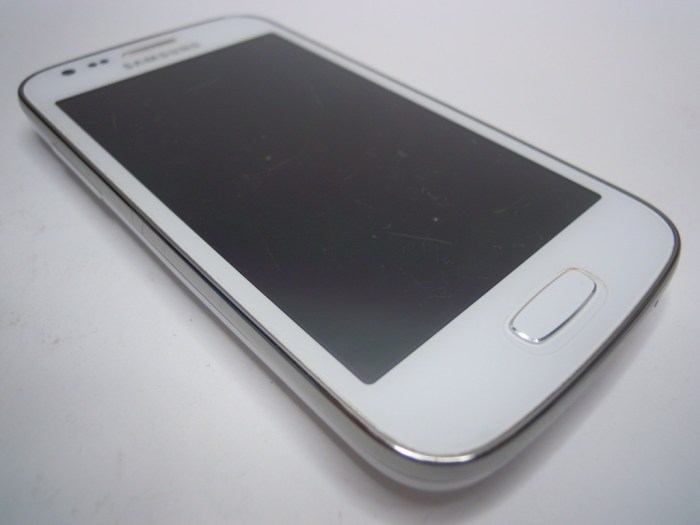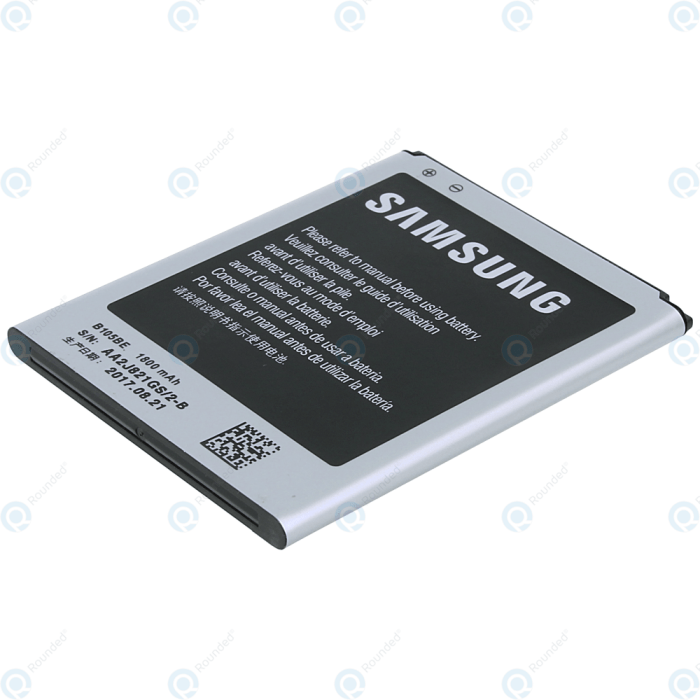Samsung Galaxy Ace 3 LTE GT-S7275 Specification
Samsung Galaxy Ace 3 LTE GT-S7275: A Retrospective
Samsung galaxy ace 3 lte gt-s7275 specification – The Samsung Galaxy Ace 3 LTE GT-S7275, released in 2013, represented Samsung’s effort to provide a budget-friendly smartphone with 4G LTE connectivity. This device targeted consumers seeking an affordable option with access to faster mobile data speeds, a key differentiator in the rapidly evolving mobile landscape of that era. Marketing materials emphasized its sleek design, improved performance compared to its predecessors, and the inclusion of LTE capabilities as major selling points.
Device Overview

Source: allegroimg.com
The Samsung Galaxy Ace 3 LTE GT-S7275 was a mid-range smartphone aimed at budget-conscious consumers who desired 4G LTE connectivity. Its release date placed it within a competitive market segment dominated by other manufacturers offering similar specifications at comparable price points. Key selling points included the affordable price, the inclusion of LTE for faster data speeds, and a relatively modern design for its time.
- Sleek and compact design
- Affordable price point
- 4G LTE connectivity
- Improved processor performance compared to previous Ace models
- User-friendly interface
Technical Specifications
The Galaxy Ace 3 LTE’s technical specifications positioned it firmly within the budget-friendly smartphone category of
2013. Its processor, RAM, and storage were typical for devices in its price range. The inclusion of LTE was a significant advantage, providing access to faster data speeds than many competing devices at the time. The following table details its key specifications:
| Model | Specification | Value | Notes |
|---|---|---|---|
| Samsung Galaxy Ace 3 LTE GT-S7275 | Processor | 1.2 GHz dual-core | Sufficient for basic tasks and web browsing |
| Samsung Galaxy Ace 3 LTE GT-S7275 | RAM | 1 GB | Limited multitasking capabilities |
| Samsung Galaxy Ace 3 LTE GT-S7275 | Storage | 8 GB (expandable via microSD) | Expandable storage was a significant advantage |
| Samsung Galaxy Ace 3 LTE GT-S7275 | Display | 4.0 inches, 480 x 800 pixels | Standard resolution for the time |
| Samsung Galaxy Ace 3 LTE GT-S7275 | Operating System | Android 4.2 (Jelly Bean) | Upgradable to a later version (specific version may vary by region) |
| Samsung Galaxy Ace 3 LTE GT-S7275 | Battery | 1500 mAh | Battery life was moderate |
LTE capabilities included support for various frequency bands, though specific bands varied depending on the region of sale. Data speeds were generally comparable to other LTE-enabled devices released around the same time, offering a noticeable improvement over 3G networks. Compared to other Samsung phones from the same period, such as the Galaxy S4 or Note 3, the Ace 3 LTE offered significantly lower specifications, reflecting its lower price point.
| Model | Megapixels | Features | Video Recording |
|---|---|---|---|
| Samsung Galaxy Ace 3 LTE GT-S7275 | 5 MP | Autofocus | 720p |
| Example Contemporary Smartphone (A) | 8 MP | Autofocus, LED Flash | 1080p |
| Example Contemporary Smartphone (B) | 13 MP | Autofocus, LED Flash, HDR | 1080p, 60fps |
User Interface and Experience
The Galaxy Ace 3 LTE ran on Android 4.2 (Jelly Bean) with Samsung’s TouchWiz UI overlay. This overlay offered customizations such as widgets, themes, and additional features. Performance was generally adequate for everyday tasks, though users reported occasional lag when multitasking or running demanding applications. Reviews frequently noted the device’s responsiveness was satisfactory for basic use but could struggle with more intensive activities.
Common user feedback highlighted the ease of use of the interface, while some users expressed frustration with the occasional lag and limited multitasking capabilities. The TouchWiz interface, while offering customization options, was sometimes criticized for its bloatware and potential impact on performance.
Connectivity and Features

Source: crsmartphone.fr
The Galaxy Ace 3 LTE offered a standard suite of connectivity options common for smartphones in 2013. These features ensured users could easily connect to various networks and devices.
- Wi-Fi: 802.11 b/g/n
- Bluetooth: 4.0
- GPS
- NFC (Near Field Communication): Availability may vary by region
- MicroUSB
The functionality of each option was standard for the time. Compared to similarly priced devices, the connectivity options were fairly typical, offering no particularly unique or groundbreaking features. The inclusion of NFC, however, was a plus for users interested in contactless payments and data sharing.
Legacy and Impact, Samsung galaxy ace 3 lte gt-s7275 specification

Source: rounded.com
The Samsung Galaxy Ace 3 LTE GT-S7275 holds a relatively minor place in Samsung’s extensive product history. While not a flagship device, it played a role in expanding Samsung’s reach into the budget-friendly LTE smartphone market. Precise sales figures are unavailable, but it likely contributed to Samsung’s overall market share during its time on the market.
Its main contribution was making LTE connectivity more accessible to budget-conscious consumers. The device didn’t introduce any groundbreaking innovations, but it demonstrated Samsung’s commitment to providing affordable access to newer technologies. The device’s lifespan, from release to end-of-life support, spanned approximately 2-3 years, a typical timeframe for smartphones in that era.
Illustrative Example: Camera Performance
The 5-megapixel camera on the Galaxy Ace 3 LTE provided adequate image quality in well-lit conditions. Images exhibited acceptable sharpness and color accuracy. However, low-light performance was noticeably weaker, resulting in grainy and less detailed images. Video recording at 720p was functional, but lacked advanced features such as image stabilization, resulting in shaky footage, especially when recording while moving.
Compared to contemporary smartphones in a similar price bracket, the camera performance was average. Higher-end devices often featured higher megapixel counts, improved low-light capabilities, and more advanced video recording features such as 1080p resolution and image stabilization. The Ace 3 LTE’s camera was sufficient for basic photography and videography but fell short of the capabilities of more premium offerings.
Question Bank: Samsung Galaxy Ace 3 Lte Gt-s7275 Specification
Was the Samsung Galaxy Ace 3 LTE GT-S7275 upgradeable to a later Android version?
While initial OS version is Android 4.2.2 (Jelly Bean), specific upgrade capabilities varied depending on region and carrier. Information on exact upgrade paths is best sourced from Samsung’s official archives or relevant carrier websites.
How does the battery life of the GT-S7275 compare to similar phones from that era?
Battery life was generally considered average for a device of its specifications and time period. Performance varied based on usage patterns. A direct comparison requires referencing reviews and specifications of competing models from 2013.
Did the GT-S7275 have any significant software issues or bugs?
As with any device, some users reported minor software glitches. The extent and nature of these varied widely. Specific details are difficult to definitively state without reviewing a large volume of user feedback from the time.





















